Sensory bins and preschoolers?! I can hear you know, “here we go again, another post for little ones on how important sensory bins are, but all I see is MESS MESS MESS!!!” or “I have a baby or a toddler that is eating everything, so we can’t do sensory experiences in our house.”
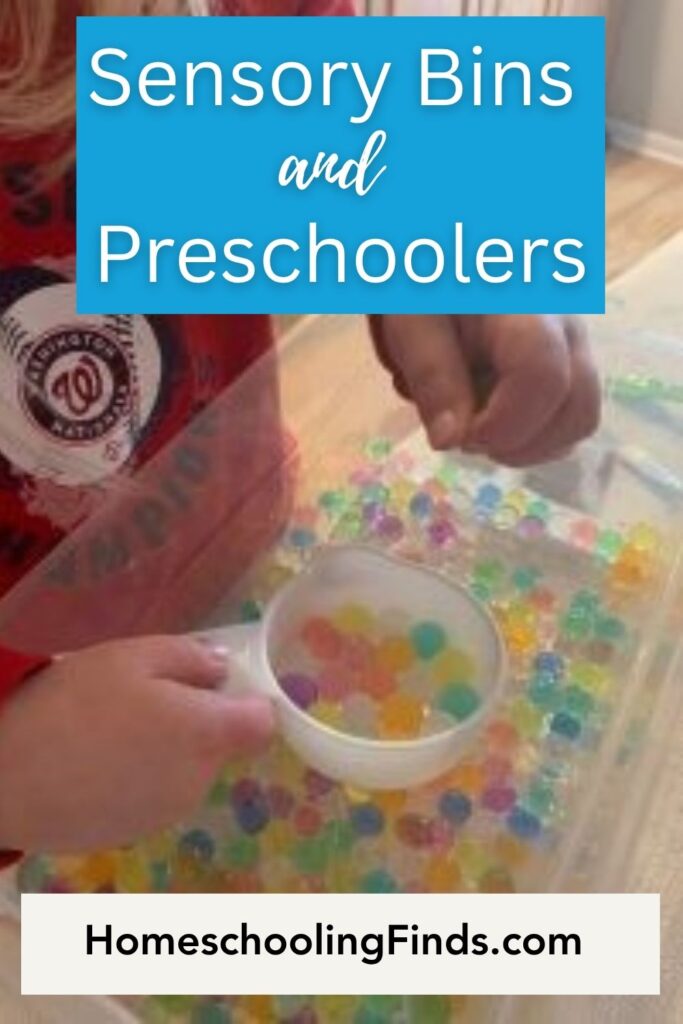
Well, actually you can. You can make anything a sensory experience. You are not just limited to sand, water, foam, rice, etc. that can get everywhere! Hang with me here!
So, what is a sensory bin (for those of you that just hide from mess or are new to homeschooling a preschooler)? A sensory bin is just a box or bin that you fill with different things to allow your child to experience different things. Simple right? Well yes and no!
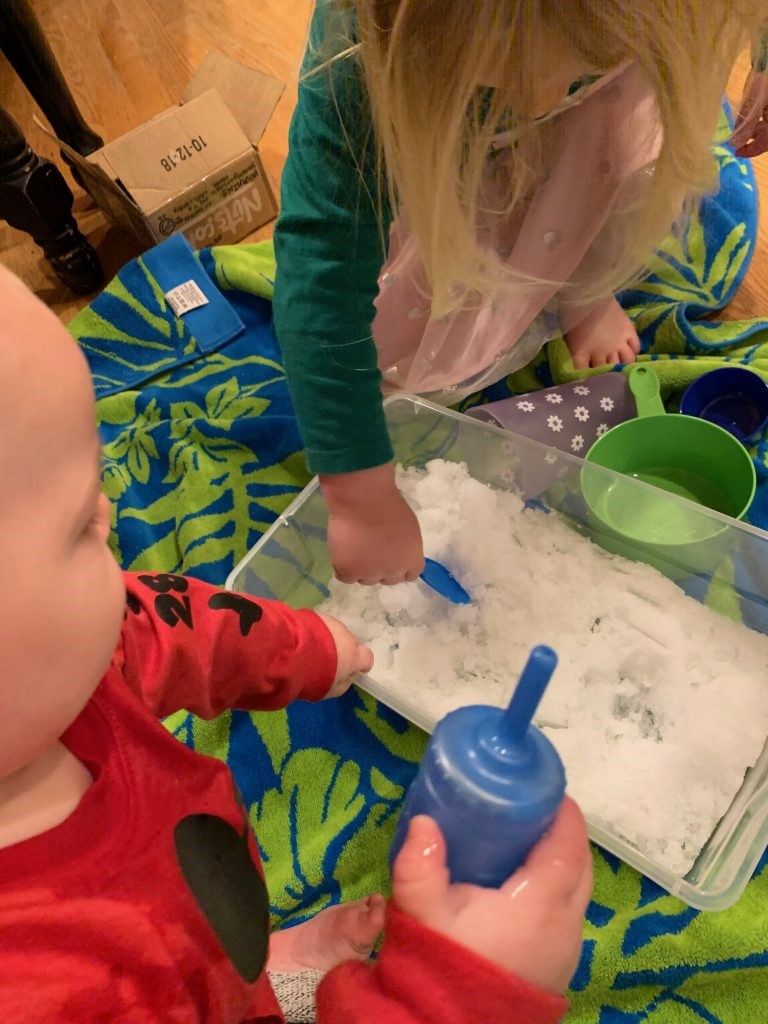
Here is our sensory bin! It is just an old plastic shoe box sized container that I had from college. So, your sensory bin does not have to be fancy because ours is not!
We have filled our sensory bin with everything from snow (seen above) to rice, water, foam, dried popcorn, and even dirt.
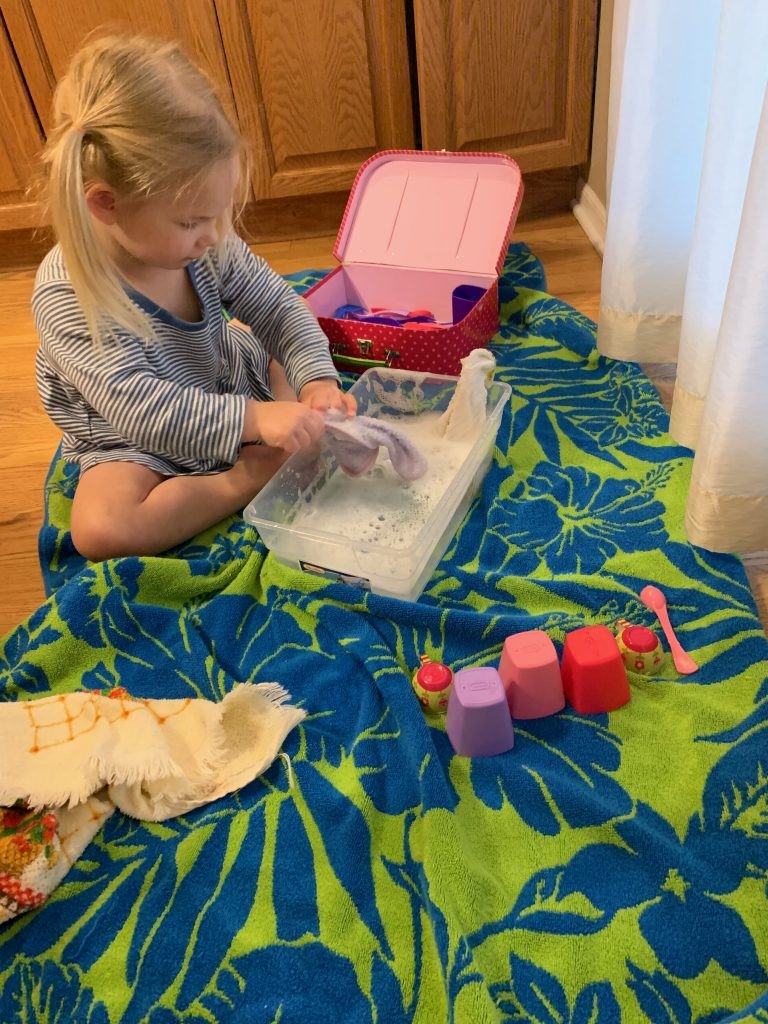
Sensory bins are important because they help children learn about different experiences. Think about it, washing dishes can feel weird because of the bubbles as well as figuring out how to get the suds on the dishes with a rag and the figuring out how to lay them out too dry. All of this can be learned through play! Sensory bins give children that opportunity.
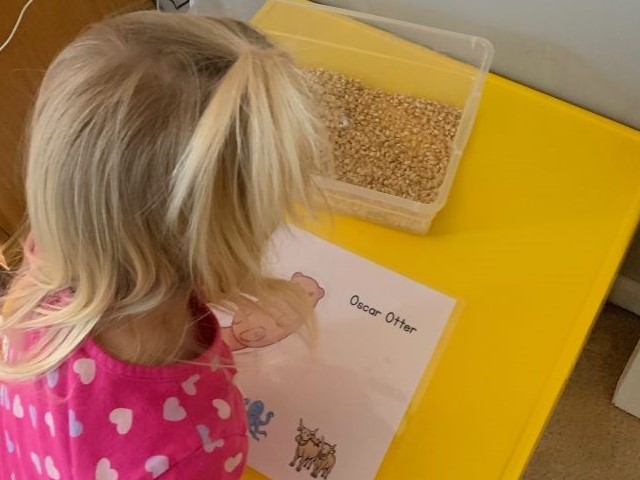
Sensory Bins for Fun and Learning
I use sensory bins not only for fun, but also for learning. You can hid things in the substance and have your child hunt for a specific item. Not only are they feeling textures and learning about moving the texture, but they are working on memory skills by remembering what they are looking for. It is a great way to incorporate tons of activities in one. Read about our N week from last year where we incorporated a lot of different sensory activities.
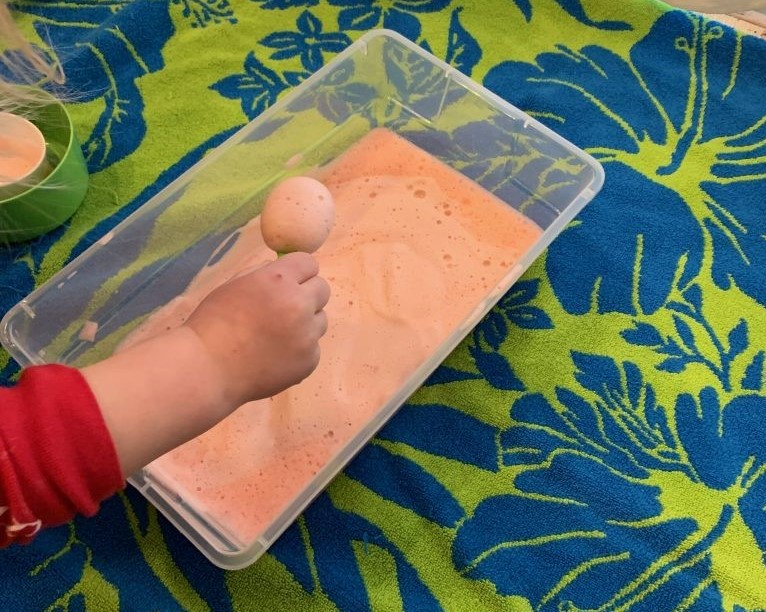
Check out my review of the Small World Sensory Science Program from SchoolhouseTeachers.com, which was my big gateway into incorporating sensory bins into our normal lives.
What about the mess?
So I have address why sensory bins are important and a variety of different types of sensory bins, but what about the mess!!! I can’t handle mess!!
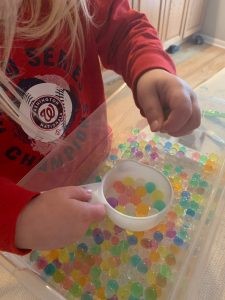
My answer to you is that yes mess is part of the game with sensory bins and preschoolers, but why don’t you use the mess as a lesson on how to listen and how to clean up after yourself. Now in all my sensory pictures, my daughter is either on a towel (aka our jungle beach towel) or a table cloth or our table. This is to contain the mess. I do have a baby at home who likes to eat everything so if I need to make sure he won’t get anything, we do sensory at the table.
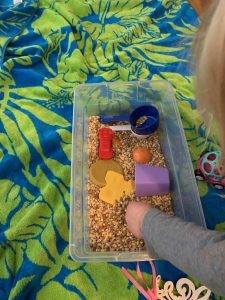
I am more of a free mom with preschool messes, but I have also taught my daughter how to clean up after herself. We keep hand towels under the sink. She just goes and gets a towel if she makes a mess and cleans it up herself. Also, we have put sensory away when she gets too messy and is not listening. This is okay as well! We need consequences if we make a mess.
I want to challenge you to create a sensory bin for your young child. Change it out every week or month. I did this at the beginning of the year not only was it a challenge, it made it fun or my daughter. Here is a list of common things you might have already at your house for your sensory bin:
- Sand
- Water
- Soap and Water
- Dirt
- Uncooked Rice
- Dried Beans
- Dried Popcorn
- Foam (water and dish soap blended together)
- Cotton Balls
- Lentils
- Spaghetti Noodles (cooked)
- Shredded Paper
- Bubbles
- Etc.
The list can go on and on! Just remember: Have Fun!!
—oOo—
A big thank you to Alyssa Riggan of Teaching with Faith for writing this article.


1 thought on “Sensory Bins and Preschoolers”